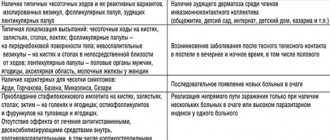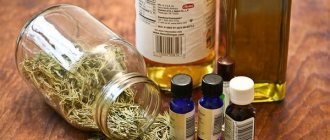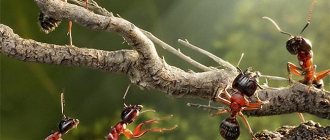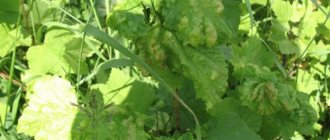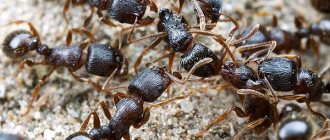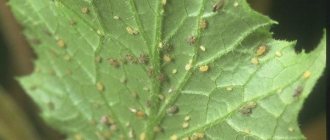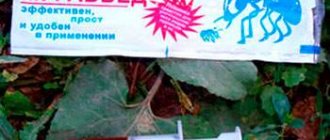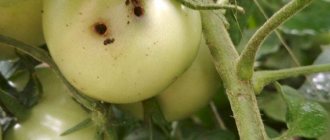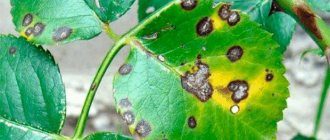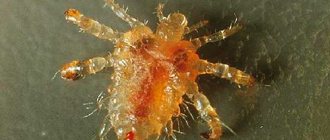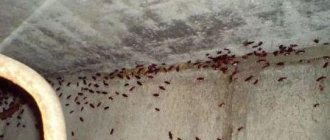An article about what to do if lice appear on goats, cows or sheep. You will learn how to get rid of parasites using medication, and how to remove dangerous insects using folk remedies. The article will also tell you how you can prevent siphunculatosis in animals belonging to the category of cattle (cattle).
Siphunculatosis, simply put - lice, is a disease that occurs as a result of parasitism on their body by wingless insects - lice.
This disease is very common among pets, especially among cattle. If goats have lice, what should you do? How to deal with this situation and what actions to take? This also applies to cows.
The appearance of lice can be caused by various reasons. One of them can be considered poor care of animals, banal non-compliance with hygiene standards and dirty premises where the animals live. Also, one should not exclude the possibility of infection of a healthy individual from a carrier of the disease. As soon as parasites are detected, the sick pet must be immediately isolated from the herd.
This article will also talk about how lice appear on a goat, how to get rid of them, and what actions to take. This is not a terrible situation, but it is still unpleasant for cattle and small pets. But it is worth protecting your livestock from such a fate as being chewed by parasites.
Ectoparasites of goats
Most often, a specific type of lice attacks, equipped with a sucking-piercing oral apparatus. This is a wingless insect 2–4 mm long. Feeds on blood and lymph. The parasite's saliva has an irritating effect, the goat scratches the itchy places, forming areas of the skin convenient for sucking on the next individuals.
Sometimes goats are attacked by lice-related lice, no larger than 3 mm in size. They have a gnawing method of feeding, allowing them to eat not only blood, but also skin particles. Lick eaters happily settle near the edges of wounds and scratches. But, most often, it is lice that parasitize goats. Outside the goat's body they are viable for 1–5 days. The laid eggs stick to the hair. After 12–20 days, the larvae hatch, and in 1–2 weeks they transform three times, turning into an individual capable of reproduction. The life of an adult lasts about 30 days.
recommended articles:
- How to prevent or treat coccidiosis in turkey poults?
- Protecting and treating goats from ticks
Goat itches
Lice spread through contact, as well as through equipment. The peak of the disease occurs in the cold half of the year.
Fleas that have settled in goats can cause trouble. These are temporary ectoparasites that are active during the warm season. They feed on blood. Arthropods leave their hosts to lay eggs. In hot weather, the larva hatches after 5 days, in cold weather - after 60. It molts three times and pupates, feeding on organic remains outside the animal.
Features of pathogens
As already mentioned, this type of insect does not have wings, however; they can jump quite high and belong to the blood-sucking category. When lice bite, a substance they secrete gets under the victim's skin, causing severe irritation and itching.
Despite the fact that the pathogenic insect is very tiny - no more than 5 mm - it brings great trouble to the poor animal. Lice are brown in color and lay white eggs, 1 mm long. Popularly, such delayed future insects are called nits.
The ripening time of eggs is from 5 to 8 days. After this period of time, whitish larvae emerge, move slowly and are not yet able to jump. Such nymphs are not yet capable of laying eggs themselves. Over the course of 8 days, their growth and formation occur. If you do not have time to destroy them during this period, they will begin to multiply, and the process will become increasingly difficult to stop.
The harmfulness of ectoparasites
Lice in goats, as well as fleas, have the following harmful effects:
- Cause itching, scratching, dermatitis, hair loss.
- When infestation is high, they drink a lot of blood, which leads to anemia.
- They are distributors of other diseases - bacterial, viral, helminthic, protozoal.
- Dangerous for humans. They cannot live on it for a long time, but they are able to carry contagium.
Insects cause the greatest harm to a goat when interacting with other parasites - ticks, flies, midges, mosquitoes, worms, protozoa. The goats suffer the most. They lose their appetite, develop anemia, and die from exhaustion. Diagnosis of the disease appears to be the detection of ectoparasites on the goat's fur.
Kids suffer more than adults
Lice in cows: symptoms of the disease
Cattle pediculosis is a common ailment that can be noticed in an animal without even examining its skin daily. This is possible due to the characteristic symptoms accompanying the disease:
- Cows lose their appetite and are replaced by drowsiness and apathy.
- There is a fairly rapid and significant loss of weight.
- Periods of apathy may be followed by sudden attacks of aggressiveness and increased agitation.
- Milking the cow becomes difficult because she does not stand still.
- Constantly rubs against any objects: fences, walls, trees and even the ground.
- Sometimes the cows start to tremble.
- Milk productivity is noticeably reduced.
- The skin turns red unevenly.
- If the disease is advanced, then the nits of the parasites become clearly visible on the hairline.
If an individual has at least one of the indicated symptoms, be sure to carefully check the skin on the tail, withers and in the ear area. Usually it is in these places that the main dislocation of insects occurs. Lice also readily settle around the nose and eyes.
Do not forget that in addition to the painful inconvenience that lice cause with their presence, they are also carriers of various infections, including fever and typhoid. The infection enters the body after the insect is crushed: the substance released by the insect when crushed penetrates into the wound formed on the body.
Treatment
The treatment strategy seems to be getting rid of lice and fleas in a goat, eliminating the consequences of their activity.
Elimination of ectoparasites
Numerous insecticidal preparations are effective against mature individuals and some larval stages, but do not affect eggs. With repeated use of one product, insects, especially fleas, develop immunity. Therefore, in most cases, instructions recommend repeating treatment after 7–14 days. Group processing provides the lowest labor costs. It is not always advisable to buy goats, like sheep, for the following reasons:
- A significant number of livestock is required.
- It is required to equip a cupping trench.
- Treatment is possible only in summer, and lice plague goats in the cold season.
- A significant amount of insecticide is required.
Therefore, aerosol treatment of goats with insecticides is used. If the number of animals is small, individual treatment of the entire livestock is carried out to prevent the spread of the invasion. In some cases, the use of injection insecticides is indicated.
Entomozan-S
Characteristics of insecticides
The following groups of drugs are used to combat insects - ectoparasites:
- FOS. Short-acting agents. Effective, destroying parasites on goats and indoors. Toxic to animals and humans, does not protect against re-infection. The most famous are Diazinon and Dichlorvos.
- Pyrethroids. Low toxicity for warm-blooded animals, but poisonous for arthropods and fish. Use aqueous emulsions of preparations to spray or wet wool. Fleas can be addictive. Neostomazan, Butox, Entomazan are in demand.
- Fipronil. Destroys ectoparasites and protects for a long time. Fleas develop addiction, so insecticides should be changed.
- Injectables. Remove fleas, lice, ticks, and worms. They have the following disadvantages:
- They do not protect the animal from pathogens carried by lice and fleas.
- Contraindicated in the last stage of gestation.
- Do not pierce dairy goats. After consumption, milk is not suitable for food for 4 weeks.
Novomek
Treatment of complications
After killing lice on a goat, it is necessary to eliminate dermatitis and restore the coat. Use bactericidal aerosols - Dermatosol, Kubatol or Terramycin spray. Adjust the diet. Sulfur and other minerals are necessary for the formation of hairs. The best option would be to use lick salt with Felucen microelements.
Essential oils
Most essential oils are not effective at killing insects, but they do act as excellent insect repellents, keeping them away from your hair. In addition, these oils can be part of oil masks, which not only improve the structure of the hair, but also destroy lice with good efficiency.
Essential oils
Tea tree oil
The effectiveness of this oil as an insecticide has been questioned by many experts. However, it is widely used in various homemade lice preparations, combined with clove or cinnamon. For example, add 50 drops of tea tree and cinnamon oils to 50 g of alcohol and 50 g of pure water. The resulting composition is applied to the scalp before traveling to regions unfavorable for lice. Tea tree oil for hair can also be used as an additive to shampoo or conditioner. An aqueous solution of this oil can be applied to a comb for combing to prevent lice.
Geranium and anise oil
It has a pronounced repellent effect, but cannot be used to treat children under 6 years of age. It is used to prepare an oil solution for head lice. For 30 g of any fatty base oil, add 3-4 drops of rosemary oil and anise oil, 4-5 drops of tea tree oil. You will also need to buy geranium oil at the pharmacy and add 5-6 drops to the mixture. You can add 5 drops of eucalyptus oil to the mixture instead of anise. The finished product is applied to the hair under a cap for an hour and a half, after which it is washed off with shampoo.
Prevention
Eliminating lice on a goat's body eliminates them. This is not the case with fleas. The eggs are resistant to the external environment, and the larvae are able to feed on organic debris. Therefore, the fight against ectoparasites is represented not only by regular treatments of the livestock, but also by planned disinsection of premises and keeping them clean. Before changing from stall housing to pasture housing and vice versa, it is necessary to treat animals against fleas and lice. In summer you need to plan events at two-month intervals, in winter - at 90-day intervals. Disinfectants are destructive not only against microorganisms - they also kill arthropods, so regular disinfection of premises helps in the fight against lice and fleas.
All newcomers and goats that have strayed from the herd are treated twice with a ten-day interval during subsequent inspection.
Felucene
Ways and causes of infection
Parasites are not resistant to external conditions. Outside the animal, they quickly die. The duration of the cycle from egg to mature individual is 1 month. With free grazing, the disease practically does not spread. Moreover, during close contacts, parasites quickly move between animals.
In the summer, the number of lice decreases as they die in the sun. This is due to the fact that parasites cannot withstand temperatures exceeding +44 degrees. At the same time, the surface of the skin heats up much more in sunny weather. Lice actively spread in winter when goats are kept crowded.
How to get rid of parasites
To solve the problem of lice in cows, complex therapy methods are used. If there are several infected heads of cattle, treatment of the entire herd is required, since the probability of infection of the rest of the livestock is almost 100%.
Expert opinion
Zarechny Maxim Valerievich
Agronomist with 12 years of experience. Our best country expert.
Ask a Question
If insecticides are used in therapy, milk milked from a cow cannot be consumed by people and calves - it should be poured out within 5 days after treatment of the cattle.
Powders
The most common powder for eliminating lice from cattle is “Chlorophos”, it is a contact insecticide. To remove parasites from cows, powder at a concentration of 80% or 50% must be diluted with water to obtain a 0.5% solution, sprayed, rubbed into the skin or watered every 2-3 days. Pregnant cows and small calves should not be treated with Chlorophos.
Aerosols
The most effective sprays against lice are:
- “Ivermek” - the components of the drug help destroy lice, eliminate itching, pain, and accelerate wound healing;
- “Stomazan” - the emulsion should be diluted with water and applied with a spray bottle to the coat (from 500 milliliters to 1.5 liters per animal);
- “Butox” - apply the solution with a spray bottle, wash off after two weeks, re-treat after seven days;
- “Sebacil” – soak the cow’s hair generously with the product, rinse off with warm water after five to seven minutes;
- “Cyflunit Flock” is a spray with therapeutic and preventive properties. It is necessary to apply along the spine to protect against lice for up to a month.
Signs and symptoms of worms in cows and calves, treatment and preventionRead
Treatment with a combination of sprays and injectable drugs against parasites - Ivermectin, Baymek, Clozatrem - gives a good effect.
Folk remedies
Effective folk remedies for lice:
- rubbing wood ash into the skin for 14 days;
- washing the wool with an antiparasitic decoction for at least three weeks - infuse wormwood in a liter of boiling water, add hellebore water, tar-based soap;
- treatment of lice-affected areas with kerosene and birch tar for 14 days.
The listed methods are safe for young calves and do not affect the taste of milked milk.
Preventive actions
How to get rid of dog smell in an apartment or house using folk and modern means
The appearance of lice in calves and adult cows can be prevented by strictly observing the following preventive measures:
- in the room where cows are kept, it is necessary to maintain cleanliness and order - promptly change the bedding in which parasites can hide, remove manure, renew the water in drinking bowls, etc.;
- feed for cows must be fresh and varied; feeding musty hay or spoiled foods is unacceptable;
- it is advisable to periodically dilute the cattle diet with various vitamin supplements to maintain immunity;
- animal skins are cleaned and washed from time to time;
- The place where the herd is kept and the cows themselves are treated with a solution of chlorophos (0.5%).
The best protection is proper care
To prevent the development of the disease, special events are organized.
The stalls are thoroughly disinfected and animals are regularly inspected for lice. The rules of quarantine and veterinary measures must be strictly observed. Cows also need to be regularly fed with fortified feed. The disease causes significant economic damage to livestock production (meat and dairy productivity decreases, and the production of raw hides decreases). Carrying out effective preventive measures reduces the risk of developing head lice in cows and calves.
Share the information presented in the article with your friends - like it.
Tell us in the comments about your experience with calf lice. Were you able to cope with this task?
What are the types and how to treat external parasites in cats?
Parasites on cats are, first of all, blood-sucking insects that can be found in stray animals and from which pets are not immune. Today we are interested in those of them that parasitize on the skin and fur of an animal, and the removal of which must be carefully monitored. Lice infestation in cats is called trichodectosis. The symptoms of lice and flea infestations are identical.
Description of parasites
Lice in nature are represented by many species. A human parasite will not live on a cat, a cat parasite will not live on a dog, and a canine parasite will not live on a cat. Simply put, cat lice cannot be transmitted to humans.
Lice eaters are small, long, dense insects of light yellow color with a head resembling a triangle. The jaw is shaped like a deep recess, ideal for grasping and biting off hair. They spend most of their lives attached to the hair at its root, but often descend to feed on the cat's epithelium.
Lice eggs are called nits, and they can also be used to diagnose a cat’s infection with skin parasites, since they are clearly visible. They are en masse attached with an adhesive secretion to the hairs, but not for long.
The young louse appears after a few days; it is smaller in size than the mother louse, but no less harmful. The cycle repeats, and if the parasites are not destroyed, then ad infinitum until the animal itself dies.
Causes and symptoms
Lice appear after contact of a domestic cat with infected animals. In nature, for example, on the soil, these parasites do not live, and if they get there, they die due to unsuitable conditions.
In case of serious lice infestation, the following are observed:
- unbearable itching, the animal itches, scratches the skin;
- Hairs fall out en masse from areas of the skin where there are multiple clusters of lice, up to and including baldness. The place where the cat sleeps is abundantly strewn with individual hairs, as during natural molting;
- parasite excrement is clearly visible if the animal’s color is light. They look like black dots, and an inexperienced owner mistakes them for dirt;
- in severe cases, dermatitis develops.
Skin parasites are also dangerous because they carry worm eggs, infection with which is almost guaranteed. Favorite places that insects occupy are the neck, head, and base of the tail.
Only hairless cats are free from this infection. When diagnosed, live lice are detected on the animal almost immediately, during the first visual examination. As a rule, conscientious owners do not have serious damage to their pets; measures are taken in a timely manner. The most serious consequence of lice infestation in cats is complete baldness.
Methods of disposal
Trichodectosis in cats is treated with the same drugs as fleas, usually in combination. That is why the symptoms of lice go unnoticed by the owners, because by destroying fleas, they simultaneously get rid of lice.
Often, owners do not even know that cats can also have these parasites. No one has heard the expression “lousy cat,” but everyone knows the colloquial “flea-haunted” cat.
Vet pharmacies offer preparations for removing fleas, which are also used to remove cat lice. This:
- Hartz, Frontline, Bayer, Bars drops. They are applied to the animal's skin in the area of the back of the head and along the spine. The parasites die, and new ones do not appear for several more weeks;
- sprays "Blokhnet", Hartz, Frontline. The fur is processed all over the body; the animal is not bathed for several days after the procedure;
- shampoos “Lugovoy”, “Fitoelita”, Rolf Club. They are used both to remove existing parasites and for prevention purposes;
- flea collars Kiltix, Hartz, “Barsik”. They do not require additional treatment with the above drugs, are also effective against fleas, and provide permanent protection with high efficiency.
Treatment for parasites is carried out twice at intervals of two weeks, since nits are often resistant to poisons. Only living individuals can be exterminated, and the hatching time for young lice is just these two weeks. In practice, parasites are first removed with drops, sprays or shampoos, and then a collar is put on the treated animal.
It should be remembered that animals are also susceptible to allergies. Any medicine, including those against blood-sucking insects, is a potential allergen. In order not to harm the animal, you should carefully study the instructions for the drug, and after use, carefully monitor the animal. Even with proper use of the medicine, reactions characteristic of allergies may occur.
Herbs
Herbal decoctions, unlike oils, have an insecticidal effect, but most often the repellent and oocidal effect of their use leaves much to be desired. Therefore, they are good to combine with sour juices and essential oils.
Herbs
Hellebore root
It has been used for a long time and is effective for killing adult lice. It is an alcohol tincture of Lobel's hellebore, diluted twice with water. It is poisonous and upon contact with chitin kills most insects. Before using it, your hair should be washed thoroughly. Then apply hellebore water to your hair under a plastic cap for half an hour. Wash off the tincture with shampoo. To kill nits, treat your hair with cranberry, vinegar or pomegranate.
Larkspur
A decoction of larkspur seeds can be used, calculating one tablespoon per glass of boiling water. An alternative option is a mixture of 10 grams of larkspur herb and 5 g of citric acid, diluted with boiling water. It is infused for about 6 hours and rubbed into the scalp and hair. Exposure – 15 minutes. Then the mixture is washed off with shampoo, and the hair is combed with a special comb.
Wormwood and tansy
A decoction of wormwood or tsitvarna is prepared at the rate of 1 tablespoon per glass of boiling water. Cook in a water bath for 15 minutes. Cooling down. Apply to hair and scalp for half an hour, then rinse off. Tansy decoction is prepared and used in the same way. Both plants are poisonous. Therefore, you should avoid getting them into your mouth.
